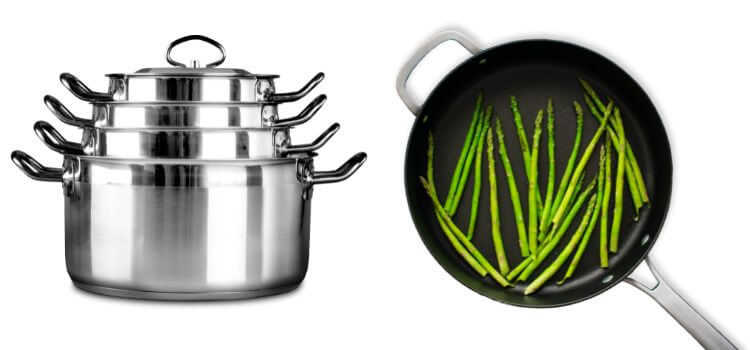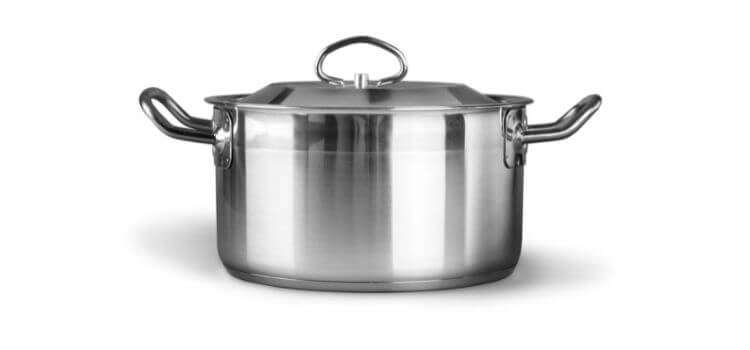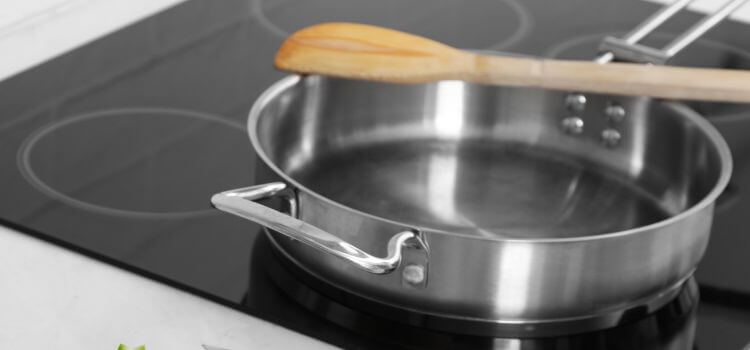As an Amazon Associate, I earn from qualifying purchases

When it comes to equipping your kitchen with the essential cookware, the debate between the rondeau and sauté pan often arises. Both of these versatile pieces of cookware have their unique strengths and applications, making it crucial for home cooks and professional chefs alike to understand their differences and capabilities.
In this article, we will delve into the distinct features and best uses of the rondeau and sauté pan, providing valuable insights to help you make an informed decision. Whether you’re simmering, braising, searing, or sautéing, understanding the nuances of these kitchen workhorses will empower you to elevate your culinary creations.
What is a Rondeau pan?

The rondeau, also known as a brazier or sautéuse, is a round, wide, and shallow pan with relatively low sides. This item usually features two loop handles and a tightly fitting lid. The pan’s shape facilitates even heat distribution, making it an excellent option for dishes that require long cooking times at lower temperatures. The rondeau’s design also allows for ample evaporation, resulting in rich and concentrated flavors.
Cooking techniques suited for the Rondeau pan
- Braising: The rondeau’s wide and shallow design is perfect for braising meats and vegetables, allowing them to be evenly cooked in a flavorful liquid. The pan’s low sides also enable the food to stay submerged without overcrowding.
- Simmering: Due to its even heat distribution, the rondeau is ideal for simmering soups, stews, and stocks. Its wide surface area also allows for efficient skimming of impurities.
- Sautéing: Although not its primary function, the rondeau’s large cooking surface makes it suitable for sautéing vegetables and meats in a single layer, resulting in evenly browned and caramelized food.
Pros of using a rondeau pan
- Versatile: The rondeau is a multi-functional pan that can be used for various cooking techniques, making it an essential kitchen tool.
- Efficient evaporation: Its wide and shallow shape allows for efficient evaporation of liquids, resulting in concentrated flavors and sauces.
- Even heat distribution: The rondeau pan’s design guarantees uniform heat distribution, eliminating hot spots and preventing food from burning.
- Durable: Made from heavy-gauge materials such as stainless steel or cast iron, the rondeau is incredibly durable and can withstand high heat and frequent use.
- Easy to clean: The rondeau’s expansive surface area not only facilitates effortless access but also simplifies the cleaning process, rendering it an exceptionally practical choice for daily culinary endeavors.
Cons of using a rondeau pan
- Limited depth: The rondeau’s low sides may not be suitable for dishes that require high volumes of liquid or food, such as risotto or pasta.
- Limited browning: Due to its shape and shallow sides, the rondeau may not produce deep browning on certain foods, such as meats.
What is a Sauté Pan?

A sauté pan is a versatile, shallow, and wide-based cooking vessel with straight or slightly sloping sides. Usually, it features a lengthy handle and is accompanied by a lid. The bottom of the sauté pan can either be flat or rounded, depending on the manufacturer.
Commonly made from stainless steel, aluminum, copper, or cast iron, sauté pans come in various sizes to suit different cooking needs. The shallow depth of the pan allows for even heat distribution, making it perfect for searing, browning, and sautéing a variety of ingredients.
Cooking techniques suited for the sauté pan
Due to its vast and flat cooking surface, the sauté pan is ideal for techniques that require frequent stirring or flipping, such as sautéing, stir-frying, and searing. Its straight sides also make it suitable for shallow frying and braising.
Pros of using a sauté pan
- Even heat distribution: The broad base of the sauté pan ensures that heat is evenly distributed, preventing hot spots that can cause uneven cooking.
- Versatility: The sauté pan’s design makes it suitable for a variety of cooking techniques, giving you more options in the kitchen.
- Easy to maneuver: The long handle of the sauté pan allows for easy handling and movement while cooking.
Cons of using a sauté pan
- Limited capacity: The shallow design of the sauté pan limits its capacity, making it unsuitable for cooking large quantities of food.
- Not suitable for deep frying: The straight sides of the sauté pan make it challenging to hold a large volume of oil, making it less efficient for deep-frying.
Comparative Analysis: Rondeau vs Saute Pan
When it comes to choosing between a rondeau and a sauté pan, there are a few key factors to consider. These include the type of cooking techniques you frequently use, the volume of food you typically cook, and personal preferences.
- Versatile: In terms of versatility, the rondeau takes the crown due to its ability to perform various cooking techniques effortlessly. The sauté pan, on the other hand, has a slight edge when it comes to maneuverability and producing deep browning.
- Capacity: When it comes to capacity, the rondeau’s wider surface area allows for cooking larger quantities of food than the sauté pan. However, if you frequently need to cook large volumes of food or deep fry, then a stockpot or Dutch oven would be a more suitable option.
- Material: An additional aspect to take into account is the composition of the pan. Stainless steel and cast iron are both durable options, but stainless steel heats up faster and is easier to clean, while cast iron retains heat better.
Practical Tips For Specific Cooking Needs
- Sautéing: For sautéing, both the rondeau and sauté pan can be used effectively. However, if you prefer a deeper brown on your food, opt for a sauté pan with straight sides.
- Braising: The rondeau’s wide surface area makes it perfect for braising large cuts of meat or vegetables. If you desire a richer and more intense flavor, opting for a Dutch oven is advisable.
- Stir-frying: Both the rondeau and sauté pan are suitable for stir-frying, but the rondeau’s wider surface area may be more practical for tossing and flipping ingredients.
- Shallow frying: The straight sides of the sauté pan make it suitable for shallow frying food, while the rondeau’s curved sides may make it difficult to hold a large volume of oil.
- Searing: If you want to achieve deep browning on your meats or vegetables, a sauté pan with straight sides would be the better option.
In selecting cookware, it’s crucial to reflect on the types of dishes you regularly prepare and the cooking techniques they require. This will help you select the most suitable pan for your needs and ensure that your meals turn out perfectly every time.
Conclusion
In conclusion, both the rondeau and sauté pan are valuable additions to any kitchen. Their versatile designs make them suitable for various cooking techniques, while their wide surfaces ensure even heat distribution.
By understanding their differences and considering your specific cooking needs, you can choose the best pan for your culinary adventures. Therefore, enhance your culinary skills by incorporating a rondeau or sauté pan into your kitchen arsenal. Wishing you joyful cooking!
As an Amazon Associate, I earn from qualifying purchases
Pingback: Saute Pan vs Wok